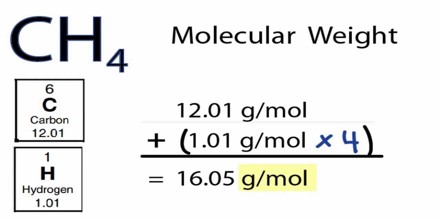How often have you pondered the intricate world of chemistry, perhaps at the precise moment when a molecular structure materializes before your eyes? Have you ever contemplated the molecular mass of that very structure? Determining the molecular mass, or molar mass, is a pivotal aspect of understanding chemical compounds and their behaviors. However, it also presents a delightful challenge. So, how does one navigate this seemingly daunting task? Let’s embark on a journey through the fascinating realm of molecular mass determination.
To begin with, it is essential to grasp the fundamental concept of molecular mass. Molecular mass is the mass of a molecule expressed in atomic mass units (amu) and is essentially the sum of the masses of all the atoms present in a molecule. Each element has a specific atomic mass listed on the periodic table, which serves as the cornerstone for our calculations. With this foundation, we can delve deeper into the methodology for determining molecular mass.
One primary method for ascertaining the molecular mass involves the use of the periodic table. For example, consider the molecule water (H2O). This compound consists of two hydrogen atoms and one oxygen atom. By consulting the periodic table, we can determine that the atomic mass of hydrogen is approximately 1.01 amu, while oxygen weighs about 16.00 amu. To calculate the molecular mass, we simply multiply the atomic mass of each element by the number of atoms present:
- Hydrogen: 2 (1.01 amu) = 2.02 amu
- Oxygen: 1 (16.00 amu) = 16.00 amu
By summing these values, we derive the molecular mass of water:
2.02 amu + 16.00 amu = 18.02 amu
Thus, the molecular mass of water is 18.02 amu. This straightforward method, based on the periodic table, is widely employed. Yet, it is imperative to approach more complex molecules with a conscientious attitude, especially when considering the nuances of molecular geometry and hybridization.
Beyond the basic additive approach, various advanced techniques come into play, particularly when contemplating larger and more intricate molecules. One such technique employs mass spectrometry, a sophisticated analytical method that allows researchers to measure the mass-to-charge ratio of ions. In this process, a sample is ionized, and the resultant charged particles are accelerated in an electric field. The trajectory of these ions provides an insightful correlation to their mass, enabling the determination of the molecular mass with remarkable precision.
Moreover, in instances where empirical formulae are known, one can determine the molecular mass via experimental data. The empirical formula represents the simplest whole-number ratio of atoms in a compound. For instance, if the empirical formula of a compound is CH, representing carbon and hydrogen in a 1:1 ratio, the molecular formula could be C2H2 if experimental molecular mass data indicates a higher molecular weight. By comparing the empirical formula mass with the molecular mass, chemists can derive the true molecular formula through the concept of the multiplicative factor.
Another critical consideration when determining molecular mass is the presence of isotopes. Isotopes are variants of elements that contain the same number of protons but differ in the number of neutrons. Consequently, their atomic masses vary, which can have a significant impact on the overall molecular mass calculation. For instance, the carbon isotope 12C has an atomic mass of 12.00 amu, while 13C weighs approximately 13.00 amu. When investigating molecular compounds that contain carbon, accounting for the naturally occurring isotopic distribution is essential for accuracy.
Now, let us consider practical examples to reinforce these concepts. Imagine you are tasked with determining the molecular mass of glucose (C6H12O6). Following the aforementioned methodology:
- Carbon: 6 (12.01 amu) = 72.06 amu
- Hydrogen: 12 (1.01 amu) = 12.12 amu
- Oxygen: 6 (16.00 amu) = 96.00 amu
Summing these contributions results in:
72.06 amu + 12.12 amu + 96.00 amu = 180.18 amu
The molecular mass of glucose thus stands at 180.18 amu, illustrating the meticulous balance of various atomic contributions in hybridized states.
In conclusion, determining molecular mass is both an art and a science reliant on meticulous calculation, empirical observations, and an understanding of the complexities of atomic structure. From basic calculations utilizing the periodic table to advanced techniques involving mass spectrometry, the journey to ascertain molecular mass is filled with subtle challenges and rewards. By embracing these intricate processes, one not only expands their scientific knowledge but also fosters a deeper appreciation for the molecules that constitute the fabric of our universe. As you venture further into this captivating discipline, remember: the molecular mass you uncover today could unlock the mysteries of tomorrow’s scientific advances.












